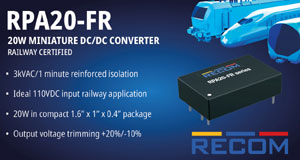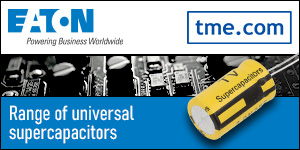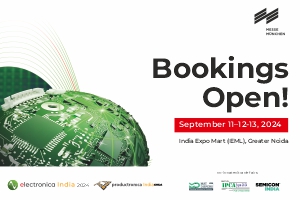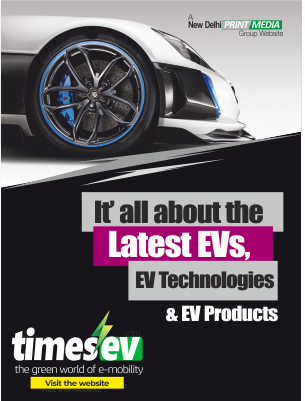Power electronics lie at the center of the revolution taking place in the mobility sector. With the world mobility trend moving towards electrification, power electronics have found their place as a foundation technology with efficient energy conversion and management in hybrid electric vehicles (HEVs) and electric vehicles (EVs). To enhance efficiency, reliability and sustainability, power electronics are integral to hybrid transportation systems and electric vehicles.
Advancements in Automotive Power Electronics
The automotive industry faces a transformation with the advent of high-profile power electronics, improving EVs for efficiency, safety and energy management. Perhaps WBG semiconductor adoption is unique, especially that of silicon carbide and gallium nitride. These materials present switched speeds triple that of silicon, with low losses and fairly high thermal endurances that allow physically much smaller and rugged designs. SiC finds use mainly in high-voltage traction inverters and onboard chargers to the extent that 800V+ architectures are employed for ultra-fast charging and enormous range, while GaN cashes in with DC-DC converters and onboard chargers for an efficiency higher that 96%.
IPMs can be considered another game-changing technology as they package and integrate high-voltage switches, gate drivers and protection circuits into a compact, thermally optimized package waterproofing the simplifying set of design parameters for the EV powertrain.
Bidirectional power conversion is what is required for vehicle to grid (V2G) and vehicle to home (V2H) working using DAB and CLLC resonant converters. These achieve efficient transfer of energy while safeguarding the EV platform in a forward-looking perspective. Solid-State Transformers introduce megawatt charging for electric vehicles, interfacing compatibility and with dynamic power facilitation.
Contention is with the battery technical part: Next-gen Battery Management Systems incorporate AI, auto-diagnostics and edge computing for real-time health monitoring, predictive maintenance and adaptive balancing, Furthermore, 48 V power electronics provide an edge to mild hybrids and ADAS by relieving loads from 12 V architecture while powering electric turbochargers and active chassis systems. This kind of innovation is placing energy ecosystems at the smart and connected core of EVs for greater performance, reliability and efficiency in the future of mobility.
The Future of mobility is being rewritten by the rise of electric vehicles (EVs) and power electronics are at its core. At the core of the metamorphosis, another transformation is upon the world: Infineon Technologies AG, a leading power semiconductor company. Infineon inculcates a new benchmark of performance, reliability, energy efficiency with its 800V traction systems, up to bidirectional charging and battery management. Speaking with two senior executives ELE Times sought exclusive insights into the changing function of power electronics in e-mobility:
Together they offered thorough observations on recent developments in wide-bandgap semiconductors, smart gate drivers, battery management systems and EV charging technologies influencing the future of sustainable transportation.
ELE Times: What are the latest developments in SiC (Silicon Carbide) and GaN (Gallium Nitride) power devices for EV applications?
Martin Spiteri & Dr Kok Wai Ma: GaN-based on-board chargers and DC-DC converters in electric vehicles will contribute to a higher charging efficiency, power density, and material sustainability, with a shift towards 20 kW+ systems. Infineon is now introducing a trench-based superjunction (TSJ) SiC technology concept. The combination of trench and charge-compensating superjunction technology enables higher efficiency and more compact designs – an important step for applications requiring the highest levels of performance and reliability. The first products based on the new technology will be 1200V in Infineon ID-PAK package for automotive traction inverters. This scalable package platform supports power levels of up to 800 kW. Key benefits of the technology include increased power density, achieved through an up to 40 percent improvement in RDS(on)*A. The 1200 V SiC trench-superjunction concept in ID-PAK package enables up to 25 percent higher current capability in main inverters without compromising short-circuit capability. Together with high-end SiC solutions, GaN will also enable more efficient traction inverters for both 400 V and 800 V EV systems, contributing to an increased driving range. The use of GaN-based power semiconductor in EV traction is a topic of intense research and development.
ELE Times: What technologies in gate drivers and power management ICs are advancing high-voltage systems?
Martin Spiteri & Dr Kok Wai Ma: Infineon gate driver ICs covering the usage of MOSFET, IGBT, and SiC in automotive 12 V to 1200 V applications with built-in protection and diagnosis. We have gate drivers which are with ISO 26262-compliant for safety critical applications in addition to isolated gate driver ICs for HV EV applicationsproviding galvanic isolation for automotive applications above 5 kW such as the traction inverter, DC-DC converter and onboard charger and support IGBT and SiC technologies up to 1200 V. Recently introduced gate drivers to replace relays and standard fuses and provide additional protection and diagnostic functions. They increase the reliability of the power net thanks to fast fault isolation in less than 100 µs, additional diagnostics, and improved protection functions like integrated wire protection.
- Infineon’s OPTIREG PMIC products are power management integrated circuits consisting of integrated, multi-rail supply solutions for demanding automotive systems in segments such as body, power distribution, chassis, ADAS, infotainment, powertrain electric drivetrain featuring ISO 26262-compliance, Boost capability, Pre/post-regulator architecture and Multiple voltage rail supplies.
ELE Times: What new technologies in bidirectional power converters are boosting EV charging and regenerative braking capabilities?
Martin Spiteri & Dr Kok Wai Ma: Regenerative braking capabilities for EV traction using bidirectional power converter is a mature technology, and in many cases can be provided without significant cost premium. On the other hand, bidirectional power conversion for on-board EV charging is an application trend driven by the increasing vehicle-to-everything (V2X) functionality requirement. To achieve such requirement, the popular choice of AC-DC PFC stage will change from Vienna rectifier to Active Front End (AFE), and DC-DC converter topologies will change from LLC to CLLC or dual active bridge (DAB).
ELE Times: How are new battery management systems (BMS) maximizing power handling and lifespan for high-voltage applications?
Martin Spiteri & Dr Kok Wai Ma: Infineon’s cell monitoring and balancing (CMB) device, also known as the BMS IC or Analog Front End (AFE), measures cell voltages and temperatures for state of charge (SoC), ensuring safe operation within the safe operating area (SOA). It performs low-power diagnostics and housekeeping and communicates with the main controller for cell balancing and pack thermal management triggering disconnection and alerts when needed.
Over time, the small differences between cells in multicell battery stacks are magnified during each charge and discharge cycle. Weaker cells with lower capacity reaching maximum voltage sooner than others force the charging process of the entire pack to stop; in this case, the full capacity of the battery cannot be used. Using Infineon’s automotive BMS cell monitoring and balancing (CMB) device to compensate the weaker cells by equalizing the charge across the entire stack will enable extending an electric vehicle’s driving range and battery lifetime. Additionally, to achieve extremely low-power dedicated housekeeping functions, such as periodically scheduled cell measurements and state analysis required for functional safety, the Cell Monitoring and Balancing IC can operate independently of the BMS’s master controller. Safety features such as signalling over- or under-voltage, thermal stress, and emergency alarms are triggered autonomously.
ELE Times: What are the trends in high-power fast-charging architectures and how are they affecting grid integration?
Martin Spiteri & Dr Kok Wai Ma: Truck electrification is driving up EV charging voltage and capacity beyond 1000V and megawatts level. Standardization activities around the world is ongoing to enable high-voltage high-power DC fast chargers be developed and be interoperable, e.g. CCS, CHAdeMO, GB/T for High Power Charging (HPC), and SAE J3400, Ultra-ChaoJi, X-MCS and NACS for Megawatt Charging System (MCS).
To construct high-power fast DC charging park,
- DC microgrid is seen as a promising approach for interconnection of the AC grid with different renewable energy sources like solar photovoltaic and battery energy storage,
- Solid-state transformer (SST) is the key enabling technology for such architecture,
Matrix switch network will facilitate flexible power distribution amongst energy sources and charging loads.
Authors:

Martin Spiteri (Vice President Automotive Technical Marketing)

Dr Kok Wai Ma (Senior Principal Engineer)
Conclusion:
Driving Toward the Electrified Tomorrow
Power electronics will change across industries, primarily in electric vehicles and sustainable-energy systems. UWBG semiconductors such as diamond and gallium oxide will creep in as the second-generation materials that can promise better efficiency, power density and thermal performance. AI-based power electronics will predictively maintain and monitor system health in real-time to ensure it is performing at its optimum and has its life further extended. Now, the rising 800V+ architecture for EVs and the emerging trend of 48V will allow for better thermal management, efficiency and fast charging. SSTs will enable the integration of DC microgrid, allowing the power to be distributed flexibly and interfacing into renewable energy sources. Megawatt charging system (MCS) is expected to provide high-power EV charging, especially for heavy-duty vehicles and global standardization schemes are underway. Fast charging, better charging and safer battery technologies are being developed one semiconductor at a time. With the emergence of SiC, GaN advanced gate drivers and megawatt chargers, a new electrified era stands before mobility.








